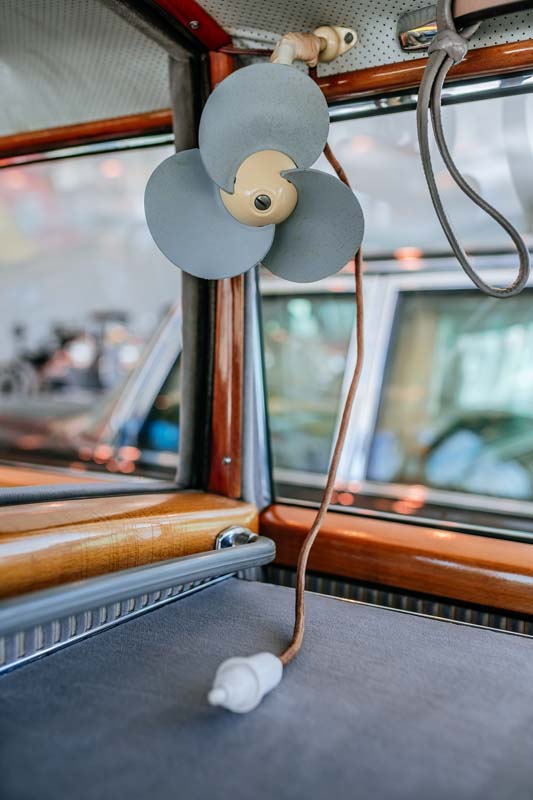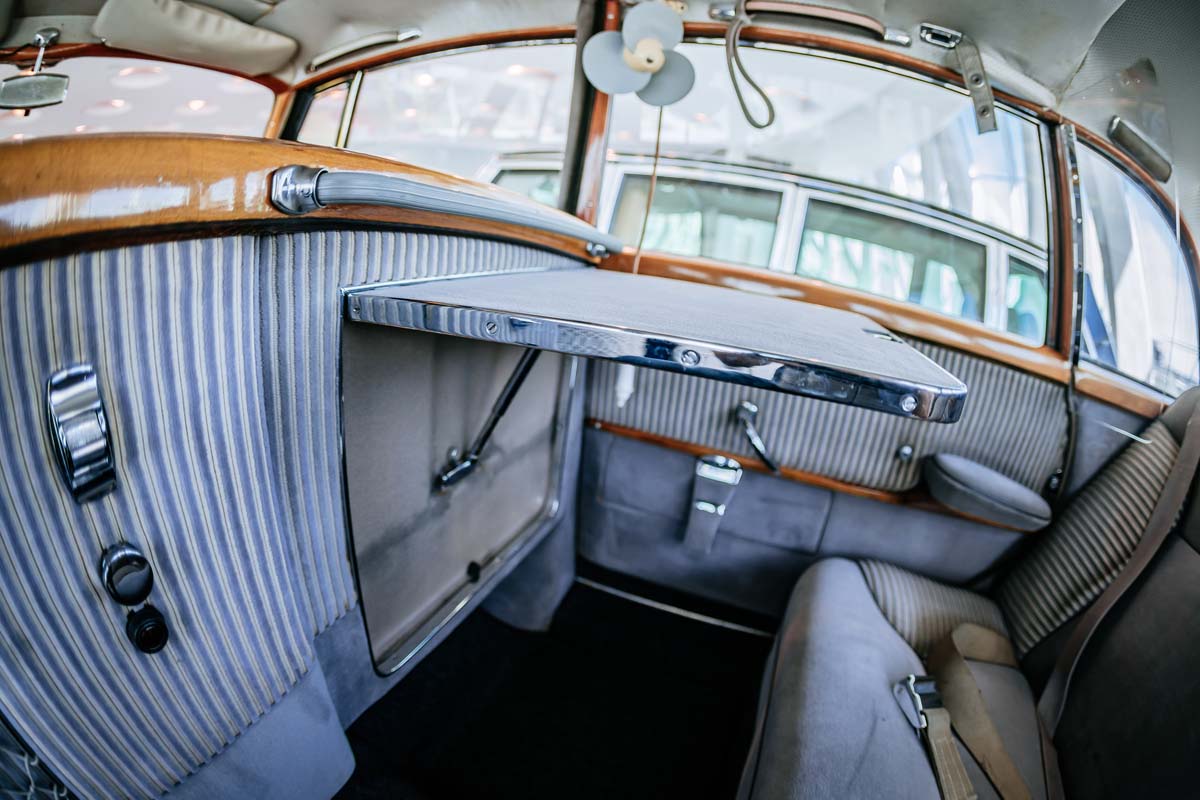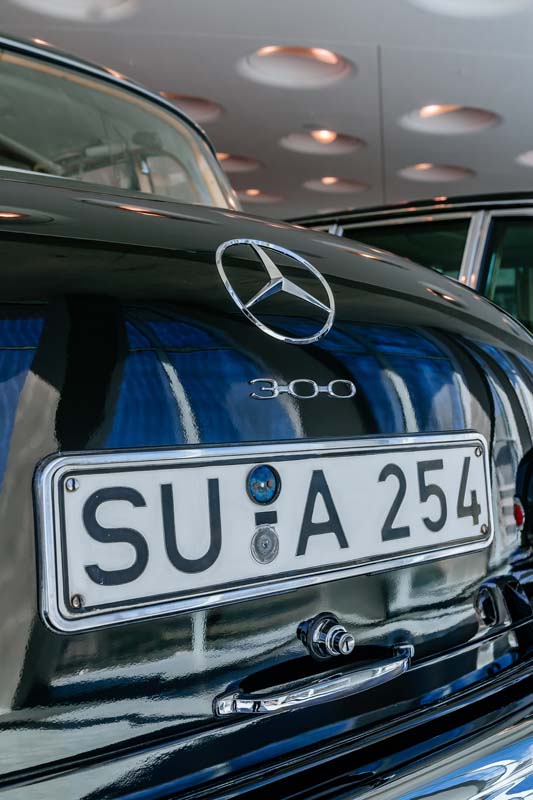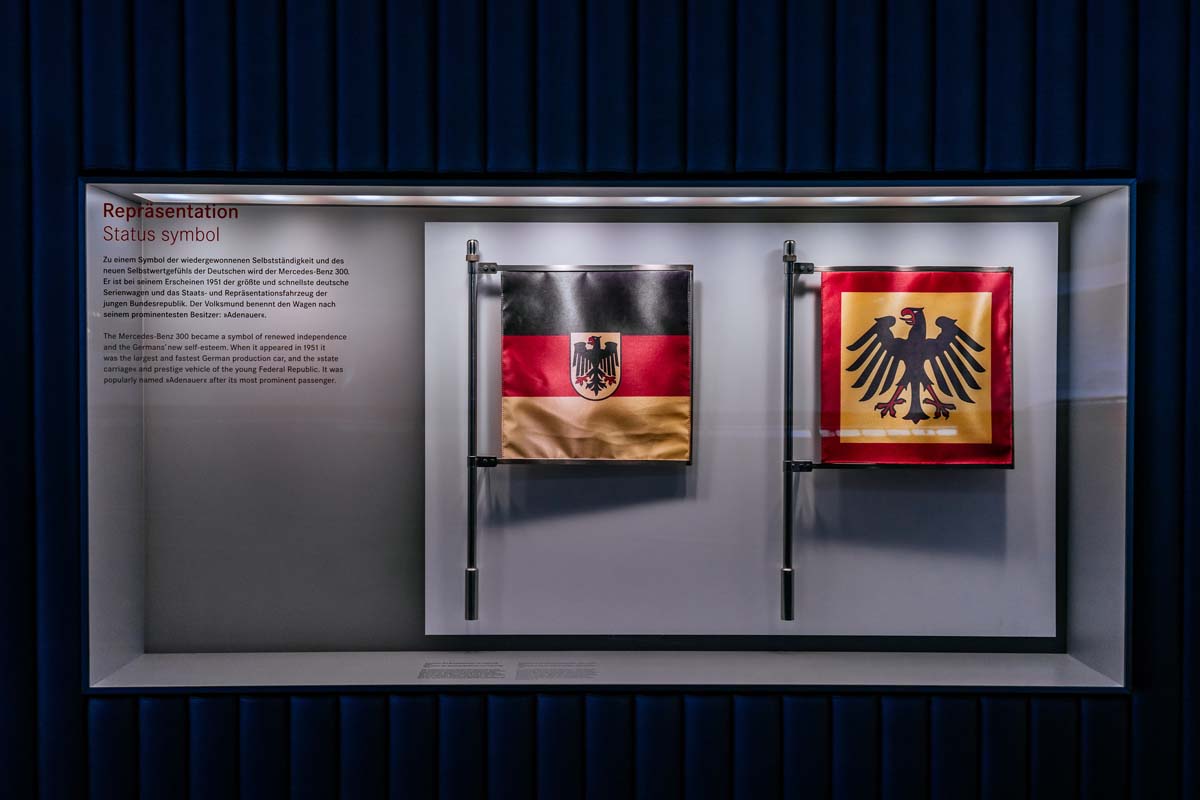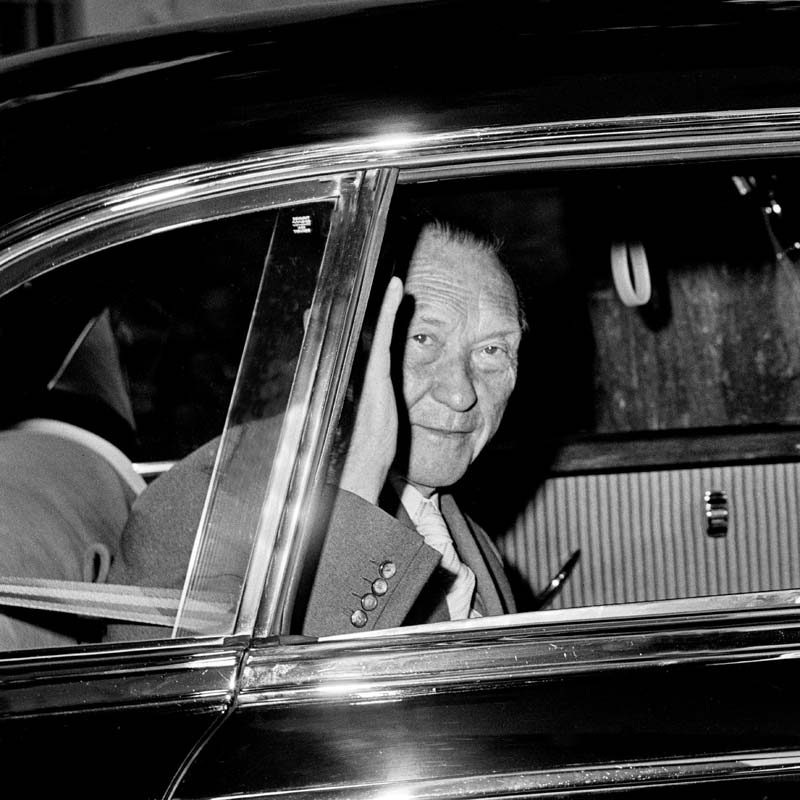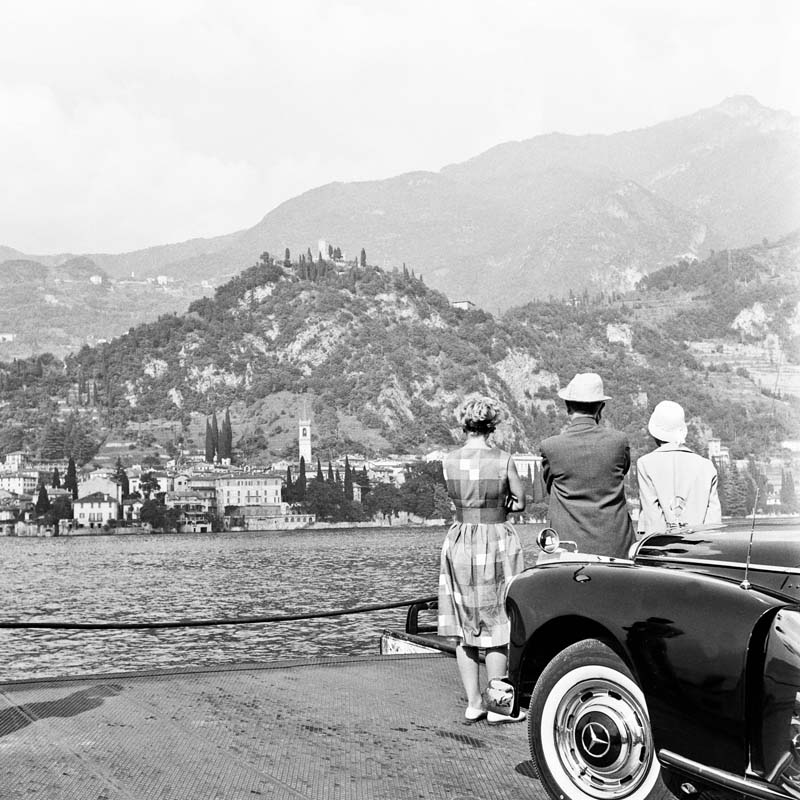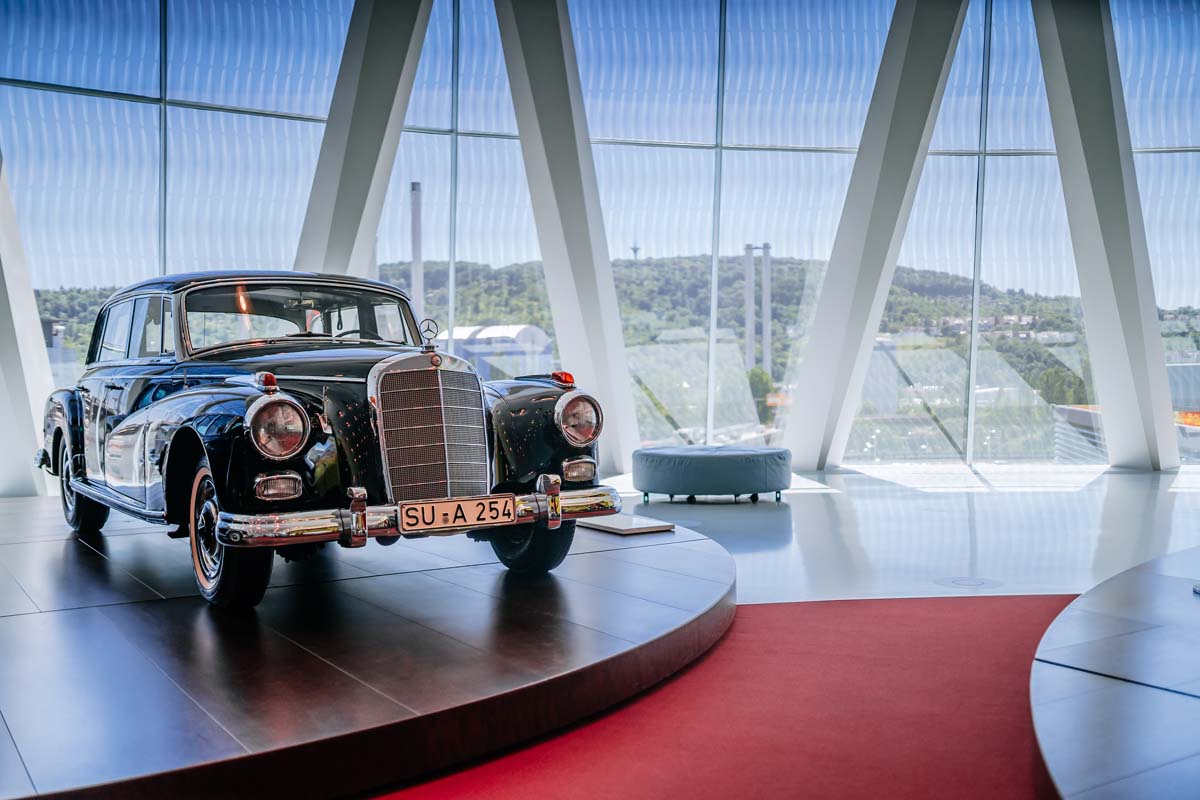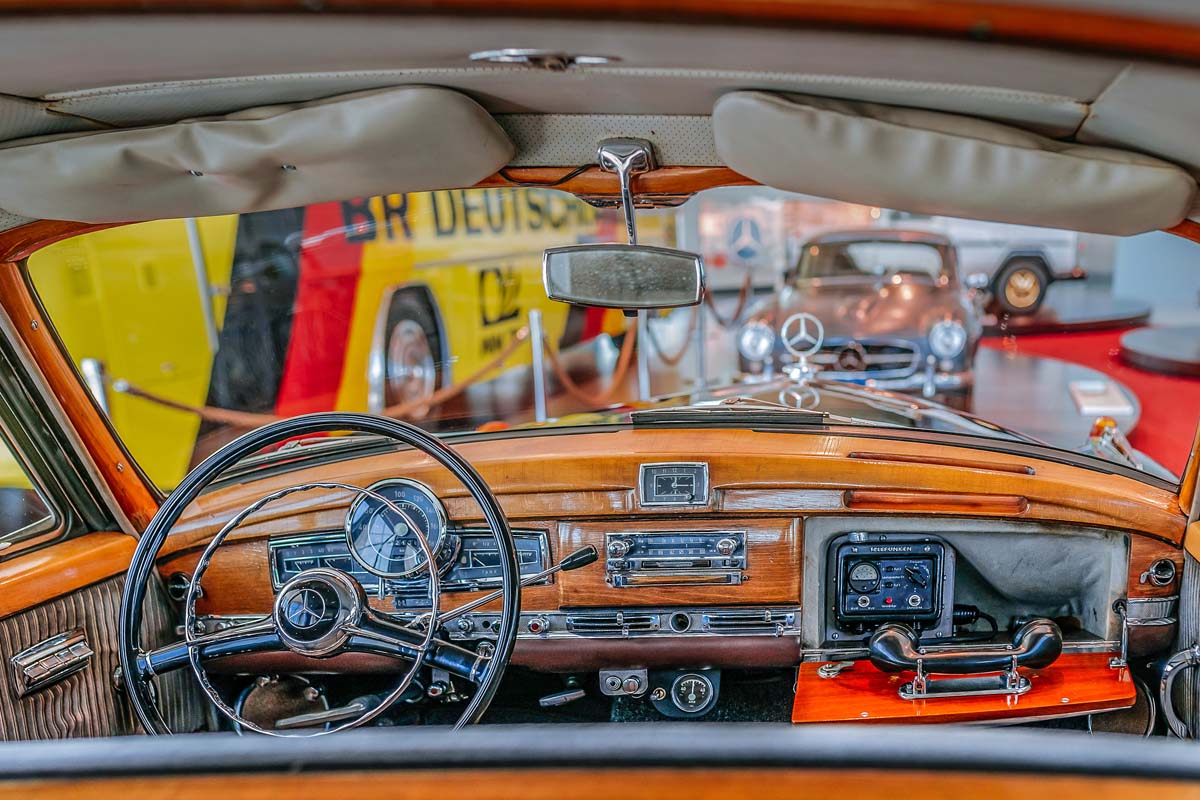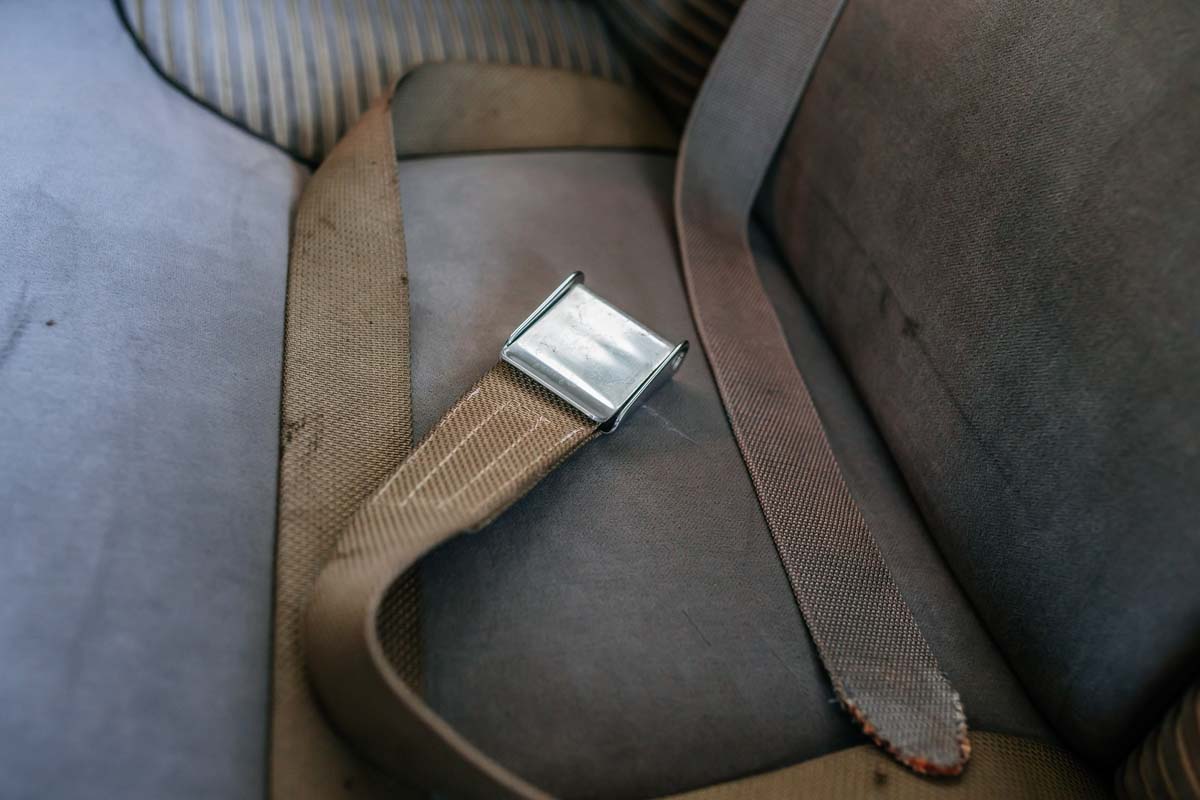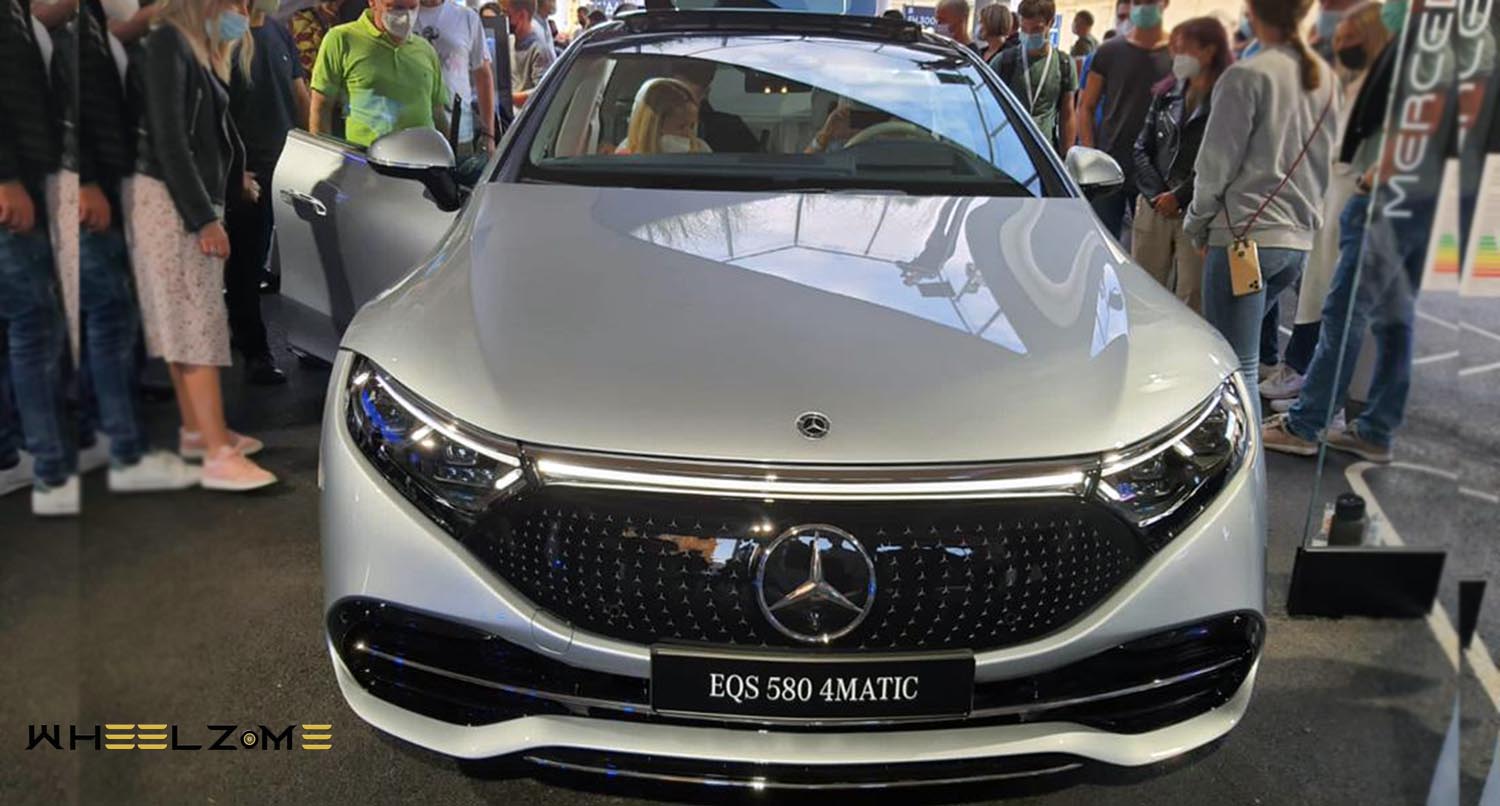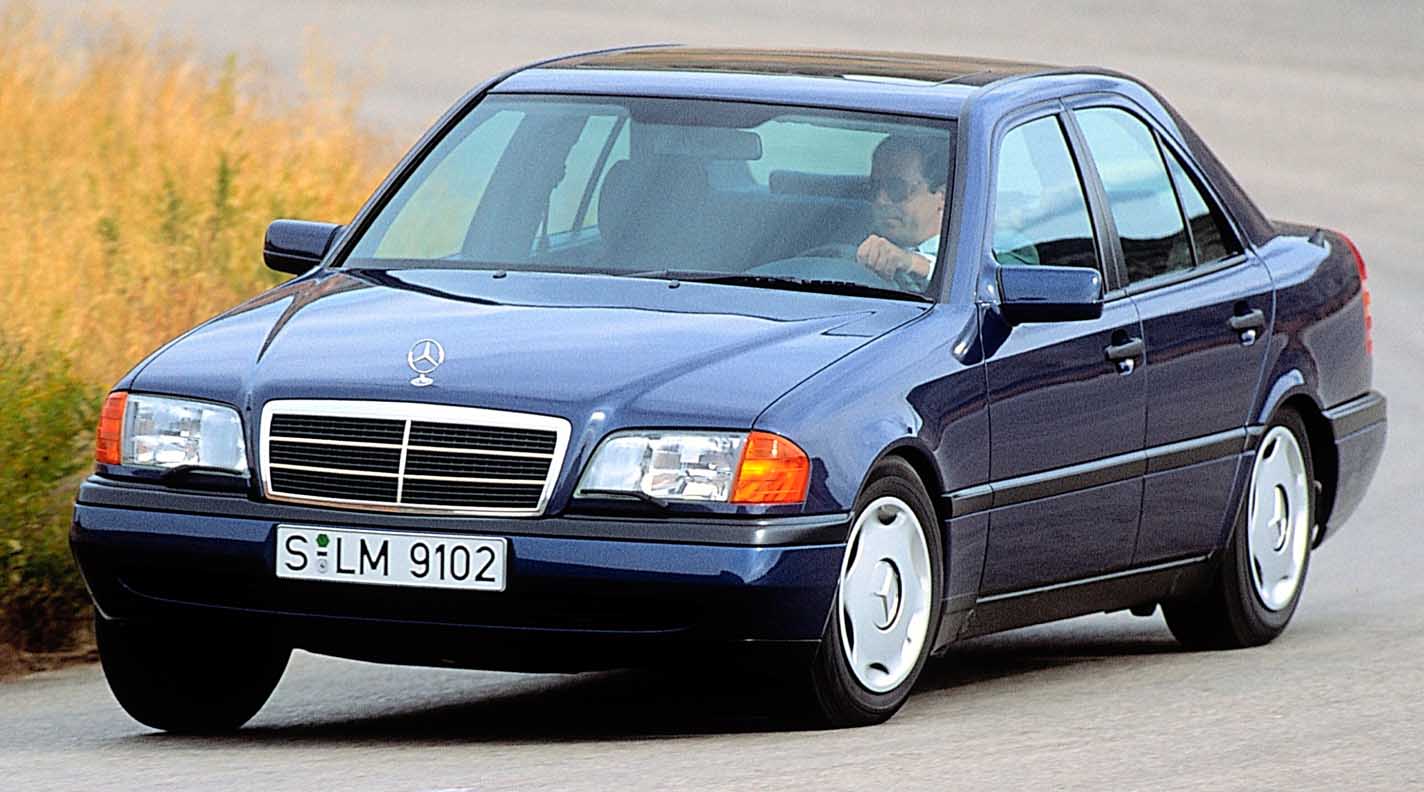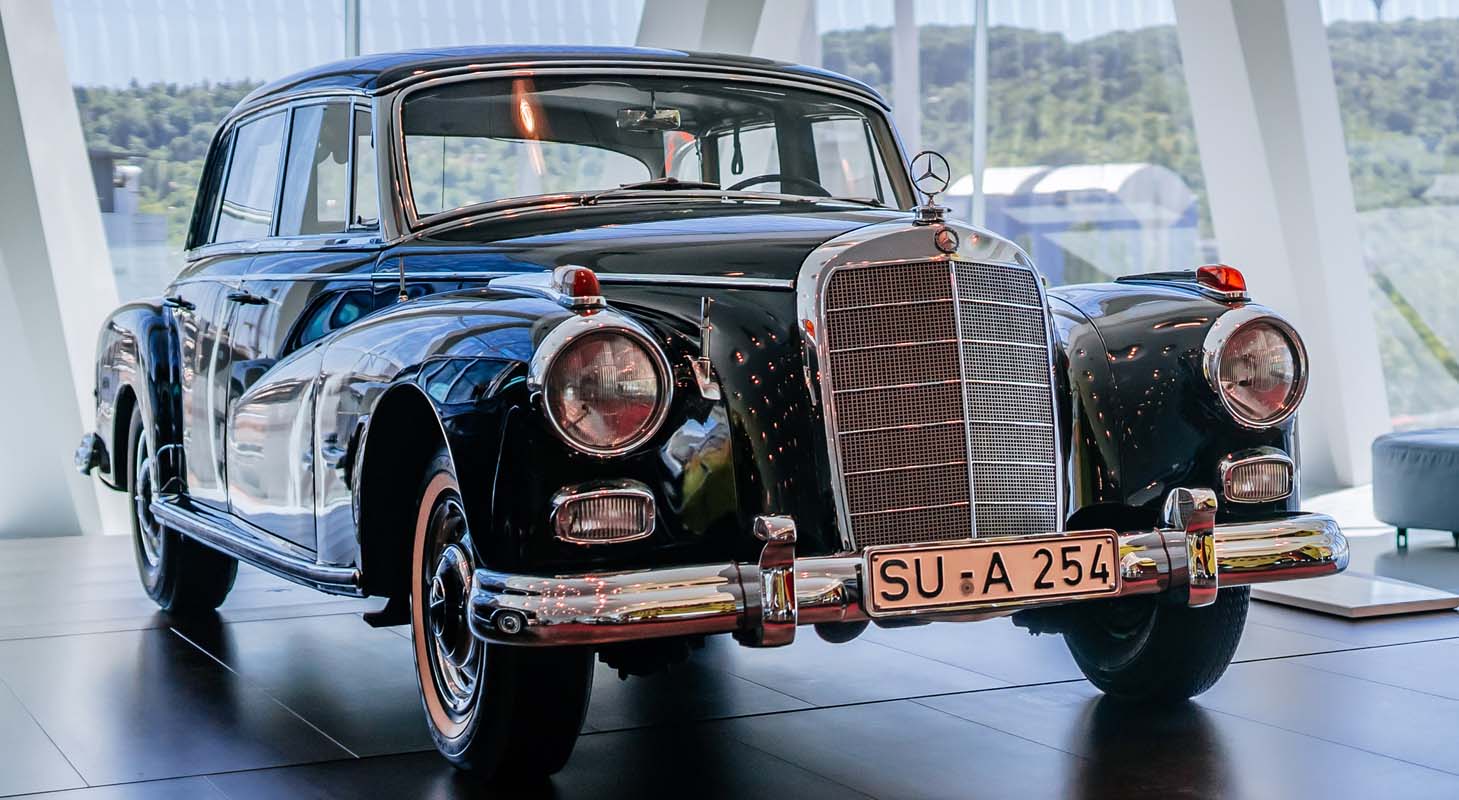
Close-Up – the name of the Mercedes-Benz Museum’s series says it all. Each part focusses on a vehicle, exhibit or architectural and design element – highlighting details and sharing background information as well as exciting and stunning facts. With 160 vehicles and 1,500 exhibits, the Mercedes-Benz Museum is a vast source of stories and histories. In the spotlight in this part: the Mercedes-Benz 300 (W 189) used by the Federal Republic of Germany’s first Chancellor Konrad Adenauer.
No. 1/2021: Mercedes-Benz 300 (W 189) used by Konrad Adenauer
Statesmanlike: Black paintwork and subtle chrome trim, paired up with plenty of space and soft upholstery in the rear. The Mercedes-Benz 300’s rear door makes a rich sound when it closes – a sound that Konrad Adenauer, the Federal Republic of Germany’s first Chancellor, experienced every time he took his place in his last official vehicle. Might state guests like John F. Kennedy have sat back on these seats? It is highly likely, given the time this vehicle was in service. When the President of the United States of America visited the Federal Republic of Germany between 23 and 26 June 1963, this very vehicle was the one his host Adenauer used for official occasions. Both politicians attended official parades while standing up in a Mercedes-Benz 300 Landaulet – in Cologne, for instance. However, this saloon was most likely also part of the fleet at the time. Nowadays, it is on display at the Mercedes-Benz Museum in Collection 4: Gallery of Celebrities.
Working atmosphere: What must it be like in 2021 – a year in which a general election will be held in Germany – to take a seat in the rear, which, back in the day, formed part of the recently established Federal Republic’s centre of power? To this day, standard features of the prestigious vehicle, such as wood trims, still bear witness to the positioning of the Mercedes-Benz 300 as a luxury vehicle. However, Adenauer’s seat in the right rear also radiates a genuine working atmosphere: on the back of the divider, which features an electrically powered window pane, a small folding table is fitted that can be used for tasks such as analysing documents or going through the post. A roller blind operated by a cable pull was installed to obscure the rear window and protect occupants from sunlight, as the Chancellor’s vehicle did not feature air conditioning at the time. However, a three-vane fan was installed above the head of government’s seat to guarantee a refreshing breeze. The 1959 saloon’s communication technology was ultramodern: the glove box concealed an early version of an in-car phone.
Safety: Static three-point seat belts in the rear were also state of the art at the time. Mercedes-Benz had been offering them as optional equipment since the end of 1958 – the Chancellor’s official car, built soon after, boasted this safety feature. The statesman was obviously convinced by the passive safety system: in 1965, following his tenure as the head of government, Konrad Adenauer was involved in an accident on a train. He subsequently criticised the railway company, saying that the management should be contemplating the integration of seat belts.
A piece of history: The exhibit at the Mercedes-Benz Museum is the last official vehicle used by the first Chancellor of the Federal Republic of Germany. Mercedes-Benz delivered it to the Republic’s official fleet in January 1959. In 1963, at the end of his tenure in office as the head of government, Adenauer then purchased the Mercedes-Benz 300 from the Federal Republic of Germany, using it as a private individual from then on until he passed away in 1967. For this reason, the exhibit at the Mercedes-Benz Museum does not bear the usual number plate of the Federal Chancellor’s vehicle, 0-002, but rather an authentic, private number plate. Adenauer continued to be chauffeured around in the prestigious saloon as a pensioner. Having a driver was paramount to him, given Germany’s first Federal Chancellor did not hold a driving licence.
Enthusiasm for technology: The saloon on show at the Mercedes-Benz Museum forms part of the W 189 model series, produced as of 1957. In contrast to the first Mercedes-Benz 300 dating back to 1951 (W 186), it featured significantly evolved technology and stylistic elements. These included a six-cylinder engine and manifold injection instead of a carburettor. As a result, the output increased from 92 kW (125 hp) to 118 kW (160 hp) and the top speed from 160 km/h to 165 km/h. The Chancellor will have been pleased about the increased output as Adenauer enjoyed being chauffeured around at high speeds. He is said to have told the driver in his Cologne accent to put the pedal to the metal many a time.
Prestigious saloon: On 15 September 1949, Germany’s parliament – the Bundestag – elected Christian-democratic and liberal-conservative politician Konrad Adenauer as the first Chancellor of the Federal Republic of Germany. Two years later, Adenauer then had to choose himself: at the International Motor Show (IAA) in Frankfurt/Main between 19 and 29 April 1951, the new prestigious Mercedes-Benz 300 (W 186) vehicle celebrated its premiere, attracting a great deal of attention in the process. The head of government attended the exhibition and spontaneously opted for the saloon by the Stuttgart-based brand as the new official vehicle. It was handed over on 8 December 1951 at Palais Schaumburg in Bonn, the headquarters of the Federal Chancellery at the time. The first ever Federal President of the Federal Republic of Germany, Theodor Heuss, also used a Mercedes-Benz 300 as his official vehicle. On official occasions, the vehicles bore 30 x 30-centimetre pennants on one of the wings. The Mercedes-Benz Museum showcases the Federal Chancellor’s pennant (“Bundesadler” eagle on black, red and gold background) and the Federal President of the Federal Republic of Germany’s pennant (“Bundesadler” eagle on gold background with red frame) in a display case as part of the historic tour in Legends 4: Post-war Miracle – Form and Diversity, 1945 to 1960. While Adenauer’s first Mercedes-Benz 300 official car featured two pennant holders in 1951, the 1959 vehicle on show at the Museum only features one holder on the right-hand wing.
Continuity: Adenauer and his Christian Democratic Union party’s election campaign slogan in the 1950s was “no experiments”, a motto the chancellor also seemed to apply to his official vehicles: he used a total of six different “300s” of the W 186 model series and its successor, the W 189 model series, between 1951 up until the end of his tenure in October 1963. The model was soon colloquially known as the “Adenauer Mercedes” because his public appearances were soon inextricably linked to the prestigious – always black – saloons.
Superiority: These vehicles were simultaneously also a symbol of the recently established, aspiring Federal Republic of Germany. The Federal Chancellor took the vehicle on official visits whenever he could. He travelled long distances on the official train and consequently the official vehicle was also transported by rail. For instance, this was the case for the official visits to London (London and Paris Conferences, 1954), Moscow (1955) and Paris (1962). Adenauer could also rely on the official vehicle for holiday trips to Cadenabbia on the shores of Lake Como in Italy. The original “Adenauer Mercedes” on show at the Mercedes-Benz Museum even appeared in the 1960 documentary entitled “Ferien ohne Urlaub. Ein Besuch in Cadenabbia.” (No rest on holiday. Visiting Cadenabbia.), centring around the Chancellor’s visits to Lombardy.
“Adenauer” No. 1: The Chancellor’s first Mercedes-Benz 300 dating back to 1951 is also a pivotal piece of history. The official vehicle was taken out of service and sold in 1956, having covered more than 150,000 kilometres. In 1971, it made its way to the United States of America and was purchased by the soon-to-be-established “Haus der Geschichte der Bundesrepublik Deutschland” (House of the History of the Federal Republic of Germany) in 1989. Ever since the establishment opened its doors in 1994, Adenauer’s first “Adenauer” has been a pivotal exhibit – with the matching number plate: 0-002. Back then, body, chassis, suspension and vehicle interior of the Mercedes-Benz 300 were comprehensively restored to an outstanding condition with the support of Mercedes-Benz Classic experts.
